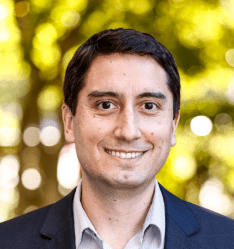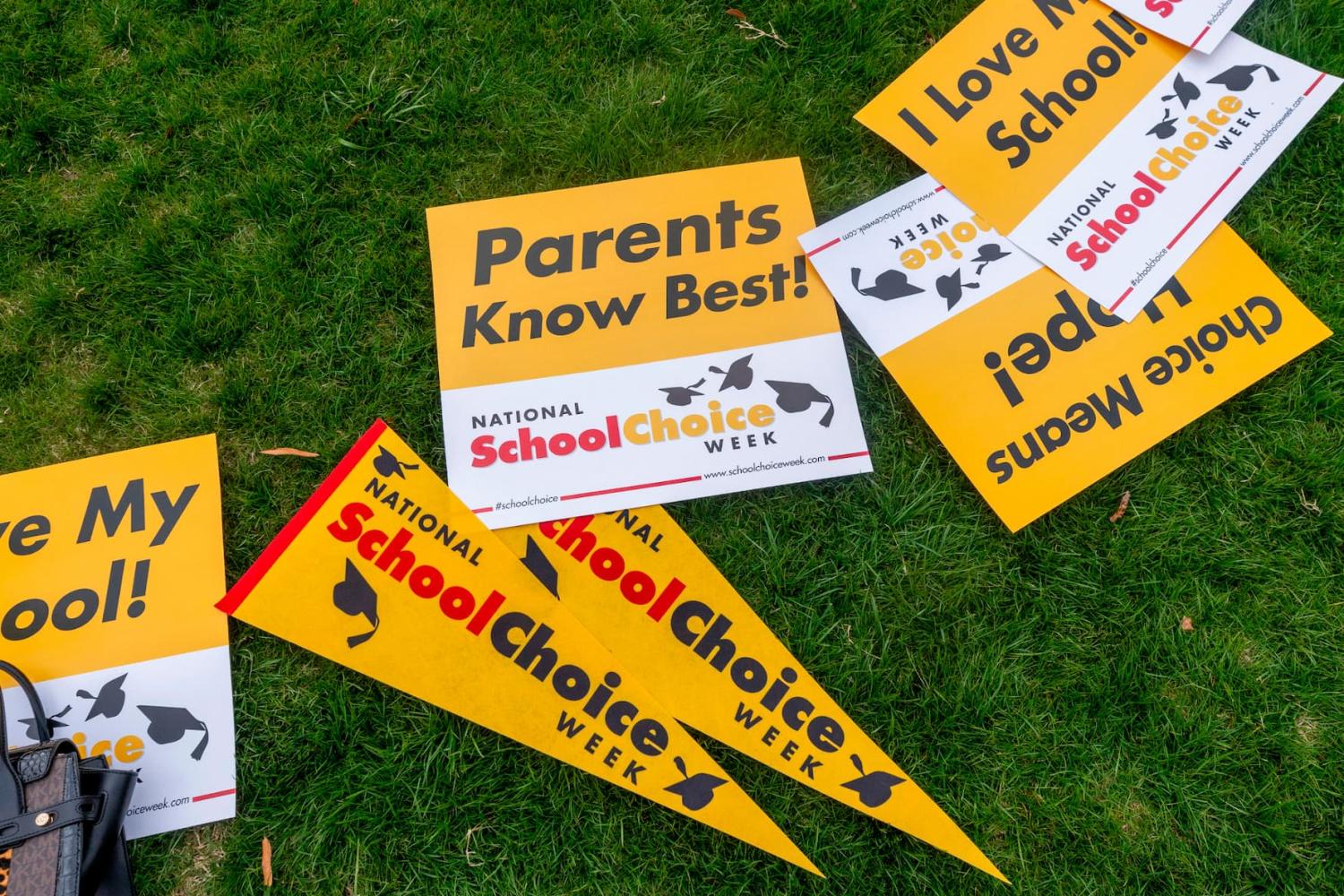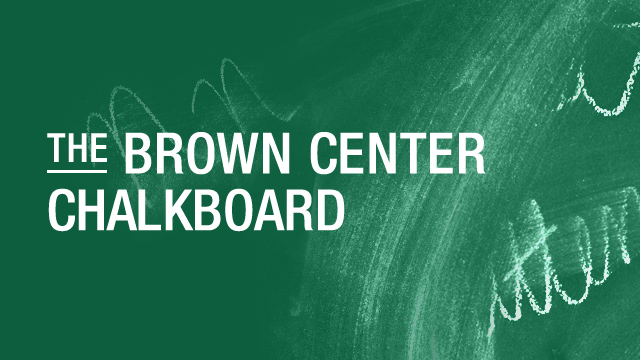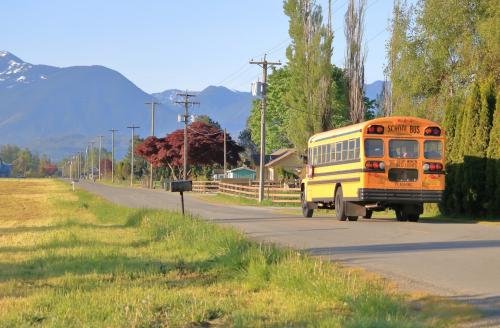Analisa Pines worked on this analysis during her time as an intern at the Brookings Institution.
This has been an eventful decade for K-12 politics and policy, to put it mildly. Yet, it’s hard to know what will have an enduring impact. Maybe we’ll look back at this as the beginning of the end for the U.S. Department of Education. Maybe we’ll come to see this as the splintering of blue state and red state education policy. Maybe it’ll be all about AI reaching classrooms.
Regardless, it seems like a safe bet that the recent push for large-scale private school choice programs will reshape our education policy landscape for years to come.
We, along with other Brown Center Chalkboard writers, have written extensively about private school choice reforms. Most recently, we have analyzed the federal tax-credit scholarship program that’s now part of the One Big Beautiful Bill Act. Before that, we focused on new or revised education savings account (ESA) programs in several states. These programs are similar in some ways to private school voucher programs of years past. However, they are less restrictive in how families can use funds—and, critically, depart from the tradition of targeting resources to students in poverty, students with disabilities, and others in need.
We took an especially close look at Arizona’s ESA program, which, in 2022, became the country’s first “universal” program available to all families. We showed that funds were disproportionately flowing to the very wealthiest parts of the state, with correspondingly less take-up in the poorest areas. For those of us concerned about inequitable access to schools, these patterns were troubling.
In this piece, we extend that analysis to five other states (Indiana, Iowa, North Carolina, Ohio, and West Virginia) with universal or near-universal private school choice programs, and we also update the data on Arizona.1 These six states are only a small subset of the rapidly growing number of states with large-scale private school choice programs. Unfortunately, we can’t run this analysis for all states that have these programs, partly because many of them don’t publish the data needed for this type of analysis.
We look, program-by-program, at whether funds tend to flow to poorer or wealthier areas. In looking at these programs, a clear picture emerges: these universal or near-universal programs are disproportionately used by families in wealthy areas—except where state policies have provisions to prevent that from happening.
Income guidelines for private school choice programs vary significantly by state
“Universal” is a bit of a misnomer. Many large-scale programs have some restrictions. The key feature for our analysis, when it comes to universality (or near-universality), is whether families’ access to funds depends on household income. This, too, is complex. Policymakers have several options if they wish to incorporate means testing into their programs. For example:
- States can restrict private school choice funds to families below an income limit. For example, New Hampshire’s ESA program had been available only to families with incomes at or below 3.5 times the Federal Poverty Level (FPL). (For a family of four, the FPL is $32,150.)
- States can prioritize lower-income families for programs with universal eligibility when total available private school choice funding can’t accommodate all requests. Earlier this year, New Hampshire’s governor, Kelly Ayotte, signed a bill that eliminates the hard cutoff for the state’s ESA program, allowing families of any income to obtain funds. However, the new, “universal” program sets an enrollment cap. If the number of requests exceeds the number of seats available, a set of priorities determine who gets funds. One priority is for families below 3.5 times the FPL line.
- States can provide less funding to higher-income families. Another option is to use a sliding scale that allows low-income families to obtain more money than high-income families. All families can receive funds; lower-income families can receive more. North Carolina’s Opportunity Scholarship program has this feature, with awards ranging from about $3,000 to $7,000, depending on household income.
As we examine patterns in whether private school choice funds go to wealthier or poorer areas, these policy features are important to consider. The specific details of each state’s eligibility criteria also matter. For example, a policy like Indiana’s, which sets its income limit very high (nearly $250,000 for a family of four), might not have much impact, since the vast majority of households in Indiana make less money than that limit.
How we analyze the take-up of state funds
To collect data for this analysis, we scoured public reports on the private school choice programs that are purported to be universal or nearly universal. We looked for reports that indicated where funding recipients live. Some states show the number of recipients in each county; other states report that information by ZIP code or school district. Some states don’t report this type of information at all. (We should note that we collected data in early 2025, so program details are accurate as of that time.)
We used program participation data from the smallest geographic area that we could find. We then merged the data from these private school choice program reports with U.S. Census Bureau data that estimate the number of children under 18 who live in each area. This gives us the two ingredients we need to estimate participation rates by geographic area. First, we know how many students from a particular area, like a county, received funds. This is our numerator. Second, we know roughly how many school-age children live in that area. This is our denominator. For example, if a private school choice program report says that 100 children in a county received ESA funds—and Census data show that 10,000 children live in that county—we would report that rate as 10 recipients per 1,000 children (or 1%).2
We categorize the six states that we analyze in this piece into three groups based on how restrictive their program is based on income. The first group, Arizona and West Virginia, have no income restrictions. The second group, Indiana and Iowa, prevent only the highest-income families from obtaining funds. The third group, Ohio and North Carolina, offer more money to lower-income families than higher-income families. We show how program take-up patterns differ across these three groups of states.
Arizona and West Virginia: Programs with no income considerations disproportionately benefit wealthier communities
We identified two programs with usable data that don’t consider income at all. That is, these programs don’t use strict income limits, income-based priorities, or sliding scales for voucher amounts. These are Arizona’s Empowerment Scholarship Account program and West Virginia’s Hope Scholarship program.3
The figures below show ESA participation rates (y-axis) by the median family income of the local geographic area (x-axis). Each dot represents one geographic area. For Arizona (Figure 1), these are ZIP Code Tabulation Areas (basically, ZIP codes). Since Arizona has a lot of ZIP codes, Arizona’s figure has a lot of dots. West Virginia (Figure 2) reports participation at the county level, so it doesn’t have as many dots. In all figures, dot sizes are proportional to number of school-age children who live in that area.
The upward slopes indicate that—in these programs that do not consider income—higher-income communities have higher participation rates than lower-income communities. In these states, those patterns are clear. Moreover, some of the very highest participation rates are in the very highest-income communities.
Indiana and Iowa: Programs that prevent the highest-income families from participating also tend to benefit wealthier communities—but not the very wealthiest
Two programs with usable data had some type of income cutoff.
Indiana’s Choice Scholarship Program, as of the time we collected data, limited eligibility to households with an annual income less than four times the free/reduced-price lunch threshold (which amounts to about $240,000 for a family of four).4 That’s well above Indiana’s median household income. However, it’s probably enough to keep very high-income families from claiming these funds.
Iowa’s Students First ESA program was limiting eligibility to households with income less than four times the FPL (about $125,000 for a family of four).5 That, too, is well above the state’s median household income, though it’s quite a bit lower than Indiana’s threshold.
Let’s see how these patterns look by local household income (at the county level in each state).
We see a familiar pattern indicated by the upward slopes: higher participation rates in higher-income areas. We also see one notable difference between these two figures and Figures 1 and 2: Here, we don’t see high program participation rates in the very highest-income areas. In other words, these states’ income limits weren’t enough to keep private school choice funds from flowing disproportionately to higher-income areas, but they did rein in the tendency for extremely high-income areas to have the largest share of recipients.
North Carolina and Ohio: Programs that offer more money to lower-income families can prevent a disproportionate share of funds from flowing to wealthier communities
The last two programs that we examine, North Carolina and Ohio, use income-based sliding scales to determine the amount of money that families can receive. That is, lower-income families can get more money than higher-income families.
North Carolina’s Opportunity Scholarship Program has four award tiers, with students from the lowest-income families receiving the largest scholarships. The award amounts are anchored to the free or reduced-price lunch (FRPL) income guidelines: full award (100%) for families below the FPRL threshold of about $60,000 for a family of four; 90% for families between about $60,000 and $120,000; 60% for families between about $120,000 and $270,000; and 45% for families over about $270,000.
Ohio has three programs that work in tandem: the original EdChoice, EdChoice Expansion, and a Cleveland-specific program. All students are eligible for at least one of these programs. The programs offer the most money to families below a certain income threshold.6 The EdChoice Expansion program, the largest of the three, has a tiering system that varies voucher amounts by household income based on the federal poverty line (FPL). Families earning up to 450% of the FPL (about $145,000 for a family of four) are eligible for the full voucher. This is most Ohio families. For families earning more than about $145,000, the vouchers start to decrease—reaching a minimum of 10% of the full award amount for families with incomes at or above about $250,000.
Comparing states can be confusing, especially when one uses FRPL and the other uses the FPL. The key point is that North Carolina begins to reduce award amounts at a much lower income threshold than Ohio. This is consistent with what we see in Figures 5 and 6 (with data at the school district level in Ohio and county level in North Carolina).
This is where we see those trend lines start to bend. In Ohio, where award amounts decrease with income—at least to some extent—we still see a positive relationship between participation rates and local median family income. However, the relationship is weaker than the other states. In North Carolina, where the lowest-income families can get substantially more funding than the highest-income families, the line bends downward. That is, a disproportionate share of participants in North Carolina come from low-income areas. This suggests that an even more disproportionate share of private school choice program funding goes to low-income areas in North Carolina (since the lowest-income families can get the most money).
This means that for states with universal ESA programs that are disproportionately funding wealthy communities, a sliding scale might help to reverse that pattern.
Universal school choice programs will skew toward wealthier areas unless policymakers take precautions
You might be thinking that our findings aren’t surprising: States with stronger income restrictions have less regressive private school choice funding allocations. You wouldn’t be wrong.
But even if it’s obvious, that finding is important for policymakers to keep in mind. Universal school choice programs are likely to direct a disproportionately large share of funding to wealthy areas unless policymakers implement policies to prevent that from happening.
Truly universal private school choice programs are directing the most resources to wealthy communities. The reasons for that pattern are still coming into focus. Chances are that a few different factors are at work, including: 1) a relative dearth of private schools in lower-income rural areas; and 2) private schools raising their tuition rates when private school choice funds become available (thereby excluding lower-income families who might struggle to bridge the gap between the value of the ESA or voucher and the full cost of tuition).
To be clear, addressing the concern of funds disproportionately flowing to wealthy areas would not address many of the other concerns with today’s universal school choice programs. The list of concerns is long, including a lack of transparency, accountability, and antidiscrimination protections, scarce evidence that these programs improve student outcomes, and potentially harmful effects on the public school systems that continue to educate the vast majority of America’s students.
However, if policymakers committed to having universal private school choice programs are also committed to expanding opportunities for their least advantaged residents—as opposed to giving handouts to their wealthiest residents—they need to design policies that will achieve that.
-
Footnotes
- For simplicity, we sometimes refer to these programs as ESAs, but we should note that some of them do not fit the technical definition of ESAs (and are more accurately classified as voucher programs).
- We omit geographic areas where the Census Bureau estimates that fewer than 100 children reside.
- At the time we collected data, West Virginia’s Hope Scholarship program had an eligibility restriction where only students who attended public school could enroll, except for kindergarteners. However, EdChoice estimated that well over 90% of West Virginia children were eligible (likely due to low rates of private school enrollment).
- All students between the ages of 5 and 21 are now eligible for Indiana’s Choice Scholarship Program.
- Starting in 2025-26, all students will be eligible for Iowa’s Education Savings Account Program.
- Technically, the original EdChoice and Cleveland programs awarded all eligible students with the same amount of money. However, if tuition exceeds the value of the voucher, the school cannot charge families below 200% of the FPL for the difference.
The Brookings Institution is committed to quality, independence, and impact.
We are supported by a diverse array of funders. In line with our values and policies, each Brookings publication represents the sole views of its author(s).









